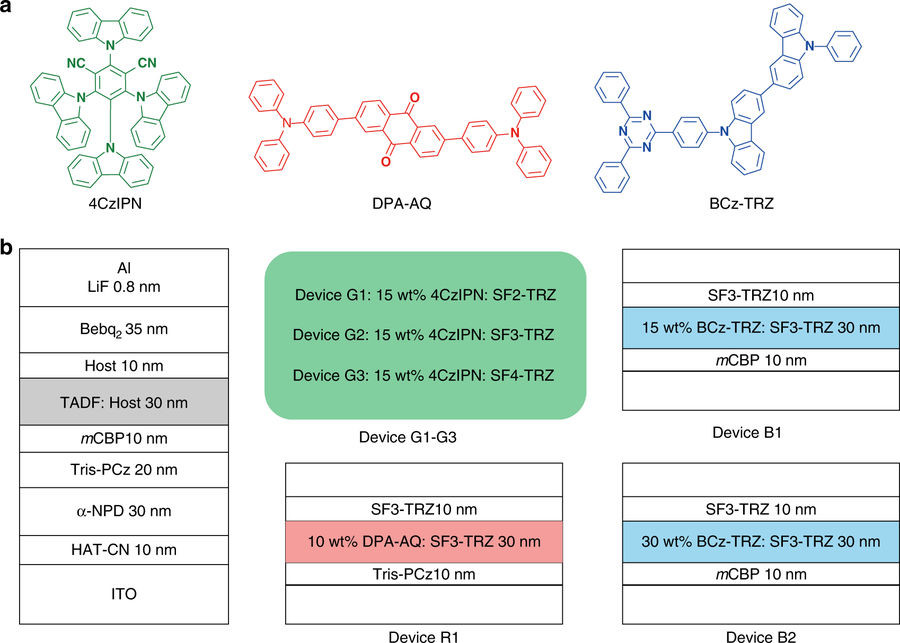n型ホストを用いる寿命の長い高効率遅延蛍光有機発光ダイオード
Long-lived efficient delayed fluorescence organic light-emitting diodes using n-type hosts
2017年12月21日 Nature Communications 8 : 2250 doi: 10.1038/s41467-017-02419-x

有機発光ダイオードは、望ましい特徴を有するため主流のディスプレイ技術となった。現在、熱活性化遅延蛍光と呼ばれる機構で発光する第3世代エレクトロルミネッセンス素子が大きな注目を集めている。しかし、素子の安定性が不十分であることが、この分野の未解決問題となっている。今回我々は、遅延蛍光有機エレクトロルミネッセンス素子において、電子を輸送するn型ホスト(通常、化学構造にアクセプター部を持つ)が電荷フラックスのバランスを取り、再結合領域を広げ、同時に高エネルギー励起子の形成を防ぐという固有の能力を持つことを実証している。このn型ホストによって、緑色遅延蛍光素子の寿命が30倍以上に、青色遅延蛍光素子の寿命が1000倍以上になる。今回の結果は、n型ホストが安定な遅延蛍光有機エレクトロルミネッセンス素子の実現に適していることを示している。
Corresponding Author
Organic light-emitting diodes have become a mainstream display technology because of their desirable features. Third-generation electroluminescent devices that emit light through a mechanism called thermally activated delayed fluorescence are currently garnering much attention. However, unsatisfactory device stability is still an unresolved issue in this field. Here we demonstrate that electron-transporting n-type hosts, which typically include an acceptor moiety in their chemical structure, have the intrinsic ability to balance the charge fluxes and broaden the recombination zone in delayed fluorescence organic electroluminescent devices, while at the same time preventing the formation of high-energy excitons. The n-type hosts lengthen the lifetimes of green and blue delayed fluorescence devices by > 30 and 1000 times, respectively. Our results indicate that n-type hosts are suitable to realize stable delayed fluorescence organic electroluminescent devices.

